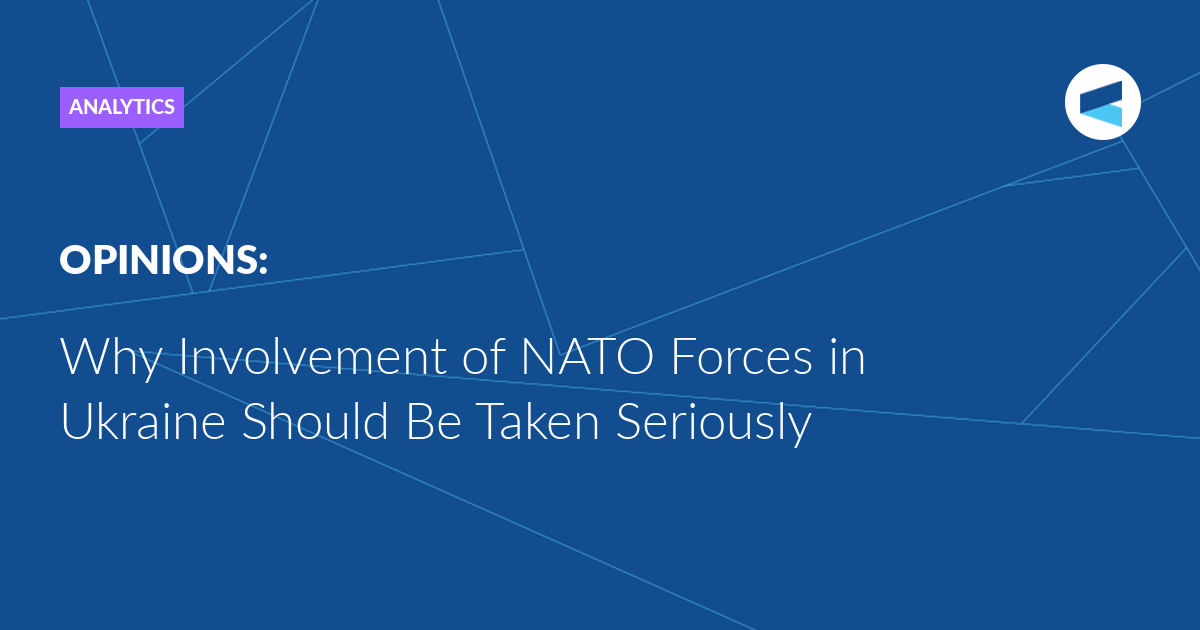A significant factor that could lead to escalation and potential direct confrontation between Russia and NATO is the possibility of military deployments of NATO troops on Ukrainian territory. Some Western political figures have discussed the potential for such a scenario, though their views have not been endorsed by the United States or presented as the official position of NATO. Several leaders from member countries have distanced themselves from the idea of deploying troops to Ukraine.
What could prompt such a decision and how could it be implemented?
The most significant factor in the possibility of direct intervention by individual NATO countries or the alliance as a whole could be a significant military success by the Russian army. At present, the frontline remains relatively stable, but the Russian forces have already achieved notable local successes, increasing pressure, taking the initiative, expanding their offensive front, and possibly building up reserves for further actions. The conditions for a repeat of last year’s offensive by Ukrainian armed forces are not apparent. There have been reports of ammunition shortages among Ukrainian forces, although these may be addressed through external supply in the future. Periodic strikes against Russian territory with cruise missiles, drones, and artillery cause damage and casualties, but they do not disrupt stability on the Russian front. Furthermore, such attacks are motivating more active efforts to establish “sanitary zones”, that is, areas from which the Ukrainian armed forces will not be able to target Russian regions. The possibility of a collapse of certain sectors of the Ukrainian frontline and significant territorial gains for Russian forces in the western direction are becoming increasingly likely. The lack of significant advances or breakthroughs over a prolonged period does not imply that such events cannot occur in the future. Rather, such possibilities are increasing given the army’s acquisition of battle experience, supplies from the military-industrial complex, losses on the Ukrainian side, delays in Western equipment deliveries, etc. While a catastrophic scenario for certain units of the Ukrainian armed forces is not predetermined, it is possible. A major breakthrough by Russian forces towards Kharkov, Odessa, or another major city could serve as a significant catalyst for NATO countries to consider the possibility of intervention in the conflict. Several such breakthroughs, occurring simultaneously or consecutively, would make such an intervention seem inevitable.
Here, individual countries or the Alliance as a whole face a strategic fork in the road. The first alternative is not to interfere and support Ukraine only with military supplies, money and “volunteers”. It is possible to admit defeat and try to minimize the damage through negotiations, thereby stopping an even greater defeat, if not the total collapse of Ukraine. The second alternative is to radically change the approach and to participate in the conflict, allowing direct intervention.
Intervention can take various forms. We may consider the use of existing infrastructure, including airfields in NATO countries. Another possibility is the significant involvement of individual units of communications, engineering troops, and air defense system crews, although their presence on the frontline may be avoided. A more extreme scenario would be the deployment of contingents from individual NATO countries along the borders of Ukraine and Belarus to facilitate the transfer of Ukrainian forces to the east. Finally, a more radical option would be the deployment of NATO military forces on the frontlines, which could be seen as an unacceptable action by the Alliance.
Any of these scenarios involve a direct conflict between the armed forces of Russia and those of NATO countries. Such a confrontation would inevitably raise questions about the Alliance’s deeper involvement, and potentially the transfer of military operations to additional areas of conflict with Russia, including the Baltic region. At this point, stopping the escalation would become even more challenging. The more casualties both sides suffer, the greater the intensity of hostilities and the closer approach to the threshold of nuclear use. In this scenario, there will be no victors.
These are only hypothetical possibilities. Nevertheless, they must be taken into consideration at this time. Until recently, few people considered the likelihood of such significant arms deliveries to Ukraine. Three years ago, the conflict itself seemed unlikely. Today, it is a reality. The prospect of a full-scale war between Russia and NATO must be taken seriously.
The Valdai Discussion Club was established in 2004. It is named after Lake Valdai, which is located close to Veliky Novgorod, where the Club’s first meeting took place.
Please visit the firm link to site






